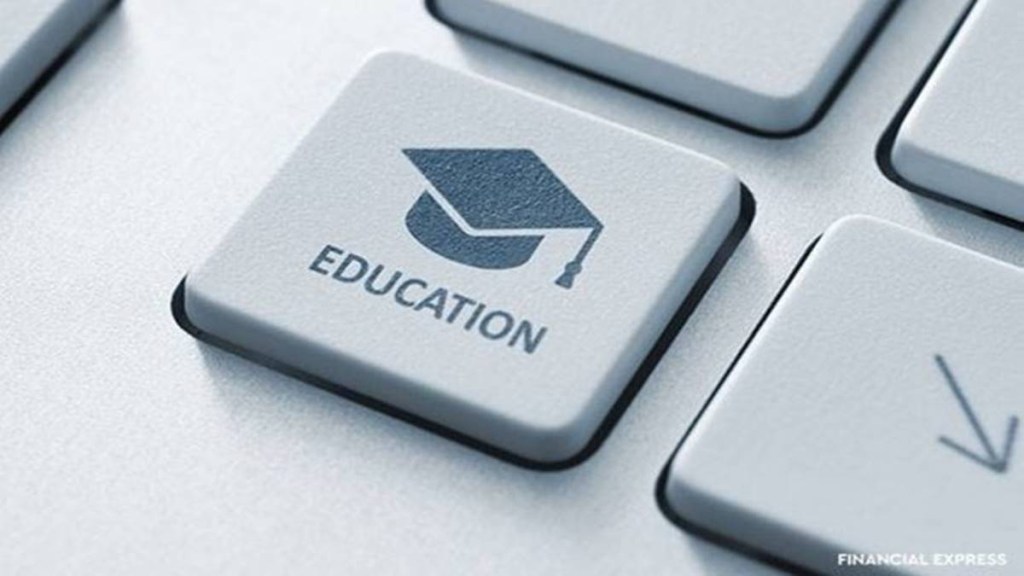By Rohit Pandit
Education 4.0, the latest evolution in the realm of learning, is characterised by the integration of cutting-edge technologies, personalised learning experiences and a student-centric approach. As we embark on this transformative journey, it becomes imperative to rethink traditional teaching methods and explore innovative strategies that enhance efficiency. This article explores how Education 4.0 is redefining the role of teachers and enhancing educational efficiency in India.
Understanding education 4.0
Education 4.0 represents a paradigm shift in education, driven by the integration of cutting-edge technologies such as artificial intelligence, virtual reality, and the Internet of Things. Research indicates that Industry 4.0 is anticipated to automate a minimum of one-third of tasks in 60% of all professions. This transformation is not merely about the digitisation of classrooms but encompasses a holistic reimagining of the entire educational ecosystem. The focus is on personalised learning experiences, data-driven decision-making, and the cultivation of 21st-century skills essential for the workforce of the future.
Transforming teacher tasks:
Education 4.0, with its emphasis on the flipped classroom model, brings about a profound transformation in the tasks and responsibilities of teachers. Let’s explore the fundamental elements of this transformation:
- Curriculum design and content curation: In Education 4.0, teachers are no longer confined to following a rigid curriculum. Instead, they play an active role in designing flexible and dynamic learning modules that cater to the diverse needs of their students. With the availability of a plethora of online resources, teachers curate content that aligns with the curriculum while incorporating real-world examples, multimedia, and interactive elements to enhance engagement.
- Facilitation of active learning: The flipped classroom model shifts the focus from passive learning to active participation. Teachers guide students in discussions, facilitate collaborative projects, and provide personalised assistance. This dynamic interaction fosters a deeper understanding of the subject matter, encourages critical thinking, and promotes a learner-centric environment where students take ownership of their education.
- Personalised feedback and assessment: Education 4.0 recognises the importance of personalised feedback in the learning process. Teachers freed from the constraints of traditional lecture-based classrooms, can dedicate more time to understanding individual student strengths and weaknesses. Assessment becomes an ongoing, iterative process, with teachers providing timely and constructive feedback to guide students on their learning journey.
- Technology integration: Embracing technology is a cornerstone of Education 4.0. Teachers leverage digital tools and platforms to enhance the learning experience. This includes using online collaboration tools, virtual simulations, and interactive educational software to create a dynamic and engaging learning environment. By incorporating technology, teachers prepare students for the digital skills required in the 21st-century workplace.
- Cultivating critical thinking and problem-solving skills: The flipped classroom method encourages students to delve deeper into subjects, question assumptions, and apply knowledge in practical scenarios. Teachers guide students in honing their critical thinking and problem-solving skills, preparing them not only for academic success but also for the challenges they will face in their future careers.
Benefits for students
The transformation of teacher tasks in Education 4.0 translates into numerous benefits for students:
- Active engagement and participation: The flipped classroom model ensures that students are active participants in their learning journey. By accessing instructional content before class, they come to class prepared and engage in meaningful discussions, fostering a deeper understanding of the material.
- Flexible learning pace: Students can learn at their own preferred pace, enjoying flexibility in their learning approach. Those who grasp concepts quickly can move ahead, while others can take the time, they need to fully comprehend the material. This personalised approach accommodates diverse learning styles and abilities.
- Real-World application: Education 4.0 places a strong emphasis on real-world application. Students, guided by their teachers, apply theoretical knowledge to practical situations, bridging the gap between academic learning and real-life scenarios. This not only enhances understanding but also prepares students for the challenges of the professional world.
- Enhanced critical thinking: The flipped classroom method cultivates critical thinking skills as students actively engage with the material, question assumptions, and analyse information. This skill set is invaluable in a world where adaptability and problem-solving are crucial for success.
Conclusion
Education 4.0 is a transformative force, reshaping the landscape of education and demanding a revaluation of traditional teaching methods. In this era of unprecedented technological advancement, the flipped classroom method emerges as a beacon of efficiency, allowing teachers to optimise their time, personalise learning experiences, and foster the development of essential skills in their students.
As we navigate the complexities of modern education, it is crucial to recognise the potential of innovative methodologies like the flipped classroom. By embracing the principles of Education 4.0 and leveraging technology to its fullest potential, educators can truly unleash efficiency in their tasks, creating a dynamic and responsive learning environment geared toward preparing students for future challenges and opportunities.
The author is the Managing Director at People’s University.

